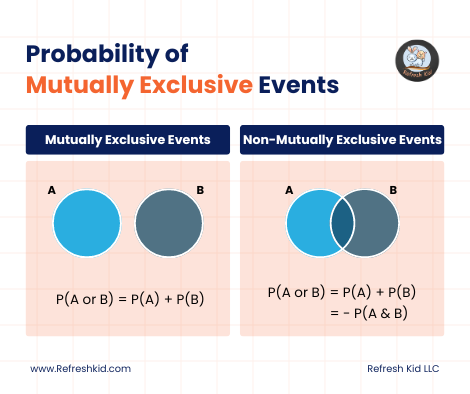A. Overview of AP Calculus AB
AP Calculus AB is a college-level course that covers fundamental concepts of calculus, including limits, derivatives, and integrals. It is designed to provide students with a solid foundation in calculus and prepare them for further study in mathematics or related fields. The course emphasizes both theoretical understanding and practical application of calculus principles.
B. Importance of AP Calculus AB Exam
The AP Calculus AB exam plays a crucial role for students interested in pursuing mathematics, engineering, or scientific fields in college. Achieving a high score on the exam can lead to college credit, advanced placement, or exemption from introductory calculus courses, allowing students to take more advanced courses earlier in their academic journey. Additionally, a strong performance in AP Calculus AB demonstrates a student's analytical and problem-solving skills, which are highly valued in various professions and academic pursuits.
II. Understanding the AP Calculus AB Exam
A. Exam Format and Structure
The AP Calculus AB exam consists of two main sections: multiple-choice questions and free-response questions. The multiple-choice section includes 45 questions, and students are given 1 hour and 45 minutes to complete it. The free-response section includes six questions and has a time limit of 1 hour and 30 minutes. The exam covers topics such as limits, derivatives, integrals, and applications of calculus.
B. Scoring and Grading Criteria
The AP Calculus AB exam is scored on a scale of 1 to 5, with 5 being the highest score. The multiple-choice section accounts for 50% of the total score, while the free-response section contributes the remaining 50%. The scoring process takes into consideration the correctness, completeness, and clarity of the responses. The College Board uses a rubric to assess the free-response questions, which includes specific criteria for each question to determine the quality of the solutions.
III. Key Concepts in AP Calculus AB
A. Limits and Continuity
Evaluating Limits Algebraically and Graphically
Limits are used to describe the behavior of a function as it approaches a certain value. Students learn to evaluate limits algebraically by using various techniques such as direct substitution, factoring, and rationalizing. They also explore graphical methods, examining the behavior of functions through the use of graphs and tables.
Properties of Continuous Functions
Continuity is an important concept in calculus, indicating that a function is uninterrupted and without any holes or jumps. Students study the properties of continuous functions, including the Intermediate Value Theorem and the relationship between continuity and differentiability.
B. Derivatives and Their Applications
Definition and Interpretation of Derivatives
The derivative represents the rate at which a function is changing at any given point. Students learn the definition of derivatives and explore their interpretation as slopes of tangent lines, rates of change, and instantaneous velocities. They also become familiar with the notation and terminology used in calculus.
Techniques for Finding Derivatives
Students study various techniques for finding derivatives, such as the power rule, product rule, quotient rule, and chain rule. They apply these rules to differentiate different types of functions, including polynomial, exponential, logarithmic, and trigonometric functions. The concept of implicit differentiation and related rates problems are also covered.
By understanding these key concepts in AP Calculus AB, students develop a strong foundation for further exploration of calculus and its applications in higher-level mathematics and scientific disciplines.
C. Integrals and Their Applications
Antiderivatives and Indefinite Integrals
Students learn about antiderivatives, which are the reverse process of differentiation. They study the concept of indefinite integrals, which represent families of functions that have the same derivative. Techniques such as u-substitution, integration by parts, and trigonometric substitutions are explored to evaluate indefinite integrals.
Definite Integrals and Area under Curves
Definite integrals are used to calculate the net area between a curve and the x-axis over a specific interval. Students learn to interpret definite integrals as the limit of Riemann sums and apply numerical methods such as midpoint, trapezoidal, and Simpson's rule to approximate their values. They also investigate the connection between definite integrals and the accumulation of quantities, including displacement, velocity, and area.
D. Differential Equations
Basic Concepts and Terminology
Differential equations involve equations that relate a function and its derivatives. Students are introduced to basic terminology, such as order, degree, and solutions of differential equations. They learn to classify differential equations as separable, linear, or homogeneous, and study initial value problems that involve finding a particular solution satisfying given initial conditions.
Solving Simple Differential Equations
Students explore techniques for solving simple differential equations, such as separable equations, linear first-order equations, and homogeneous equations with constant coefficients. They apply methods like separation of variables, integrating factors, and characteristic equations to find general and particular solutions. They also learn to verify solutions and solve initial value problems.
IV. Problem-Solving Strategies
A. Differentiation Techniques
Students further refine their skills in differentiation techniques, including the product rule, quotient rule, and chain rule. These techniques are essential for finding derivatives of more complex functions involving products, quotients, and compositions. Students practice applying these rules and develop strategies for simplifying expressions before differentiation.
Implicit Differentiation
Implicit differentiation is used to find the derivative of implicitly defined functions. Students learn to differentiate equations involving both dependent and independent variables and derive expressions for dy/dx using the chain rule. Implicit differentiation is particularly useful when explicit forms of functions are difficult to obtain.
B. Optimization and Related Rates
Optimization problems involve finding maximum or minimum values of a quantity, while related rates problems deal with finding rates of change between related quantities. Students learn problem-solving strategies for optimization, such as identifying critical points, using the first and second derivative tests, and interpreting results in the context of the problem. In related rates problems, they analyze the relationships between variables and use implicit differentiation to relate rates of change.
Maximization and Minimization Problems
Students apply calculus techniques to solve real-world problems involving optimization, such as maximizing the area enclosed by a fence or minimizing the cost of materials for a given volume. They learn to set up equations, differentiate the appropriate functions, and use critical points to determine maximum or minimum values.
Rates of Change in Related Quantities
Related rates problems involve finding how the rates of change of two or more related quantities are related. Students use calculus concepts, such as the chain rule and implicit differentiation, to differentiate the given equations and solve for the desired rate of change. They also learn to interpret the results in the context of the problem.
C. Integration Techniques
Substitution and Integration by Parts
Substitution is a powerful technique that allows students to simplify integrals by introducing a new variable. They learn to identify appropriate substitutions, rewrite the integral in terms of the new variable, and apply the chain rule to evaluate the integral. Integration by parts is another technique used to evaluate integrals of products of functions, based on the product rule of differentiation.
Integration of Trigonometric and Exponential Functions
Students explore techniques for integrating trigonometric and exponential functions. They learn to apply trigonometric identities, such as trigonometric substitution and integration by parts, to simplify trigonometric integrals. Integration techniques for exponential functions, including integration by substitution and using the properties of exponential functions, are also covered.
By mastering these problem-solving strategies in AP Calculus AB, students become proficient in applying calculus concepts to solve a wide range of problems involving derivatives, integrals, and differential equations. These strategies enhance their analytical thinking skills and provide a solid foundation for further study in calculus and related fields.
D. Applications of Integrals
Area between Curves and Volume of Revolution
Students learn how to use integrals to find the area between curves. They analyze the intersection points of curves, set up appropriate integrals, and evaluate them to determine the desired area. Additionally, students explore the concept of volume of revolution, where they revolve a curve around an axis to create a three-dimensional shape. They apply integration techniques to find the volume of these solids.
Applications to Physics and Economics
Calculus finds numerous applications in physics and economics. Students learn how to model and solve problems related to motion, such as finding displacement, velocity, and acceleration using calculus concepts. They also explore optimization problems in economics, such as maximizing profit or minimizing cost, using calculus techniques. These applications demonstrate the practical relevance of calculus in various real-world scenarios.
V. Graphical Analysis and Interpretation
A. Analyzing Functions and Their Graphs
Students develop skills in analyzing functions and their graphs. They study concepts such as domain, range, symmetry, intercepts, asymptotes, and intervals of increase and decrease. By examining graphical features, students gain insights into the behavior and characteristics of functions.
B. Determining Function Behavior and Extrema
Students investigate the behavior of functions and identify extrema, including local maximum and minimum points. They apply differentiation techniques to find critical points and use the first and second derivative tests to determine whether these points correspond to maximum or minimum values. This analysis helps students understand the shape and trends of functions.
C. Understanding Graphical Representations of Derivatives and Integrals
Students explore the relationship between functions, their derivatives, and their integrals graphically. They learn to interpret the slope of a function's graph as the derivative and understand the connection between increasing and decreasing regions of a function and positive and negative values of its derivative. Similarly, students analyze the graphical representation of an integral as the accumulation of the function's values over an interval.
VI. Preparing for the AP Calculus AB Exam
A. Study Strategies and Resources
Students are provided with study strategies and resources to prepare effectively for the AP Calculus AB exam. They learn how to organize their study materials, create a study schedule, and utilize resources such as textbooks, online materials, and review guides. Effective study strategies, including practicing regularly, seeking clarification on difficult concepts, and collaborating with peers, are emphasized.
B. Reviewing Course Material
To excel in the exam, students review the course material thoroughly. They revisit key concepts, theorems, formulas, and problem-solving techniques covered throughout the course. They engage in active learning by working through practice problems, solving past exam questions, and seeking feedback on their solutions. Reviewing class notes and participating in review sessions also help reinforce understanding.
C. Practice Tests and Sample Questions
Students engage in extensive practice by taking practice tests and working on sample questions specifically designed to simulate the format and difficulty level of the AP Calculus AB exam. They familiarize themselves with the exam structure, time constraints, and types of questions. Practicing under timed conditions allows them to develop speed, accuracy, and exam-taking strategies.
D. Tips for Effective Time Management
Time management is crucial during the exam. Students receive tips and strategies for allocating their time wisely across different sections of the exam. They learn how to prioritize questions, quickly assess difficulty levels, and avoid getting stuck on challenging problems. By developing effective time management skills, students can maximize their performance and complete the exam within the given time frame.
By following these strategies and thoroughly preparing for the AP Calculus AB exam, students can build a strong foundation in calculus, gain confidence in their problem-solving abilities, and increase their chances of achieving success in the exam.
VII. Frequently Asked Questions (FAQs)
A. What is the passing score for the AP Calculus AB exam?
The passing score for the AP Calculus AB exam varies from year to year and is determined by the College Board. Generally, a score of 3 or higher (on a scale of 1-5) is considered a passing score. However, specific requirements may vary depending on the college or university and their AP credit policies. It's always recommended to check with the institutions you are interested in to determine their specific requirements.
B. Are calculators allowed in the exam?
Yes, calculators are allowed in the AP Calculus AB exam. However, there are restrictions on the types of calculators that are permitted. The College Board provides a list of approved calculators, which typically include graphing calculators with certain limitations. It's important to review the calculator policy outlined by the College Board and ensure that your calculator complies with the specified guidelines.
C. What are the best resources for studying AP Calculus AB?
There are several resources available to help you study for the AP Calculus AB exam. Some recommended resources include:
Textbooks: Utilize textbooks specifically designed for AP Calculus AB, which cover the required topics in-depth and provide practice problems.
Review Books and Guides: Look for review books and study guides that are specifically tailored for the AP Calculus AB exam. These resources often include practice questions, explanations, and test-taking strategies.
Online Resources: Explore online platforms that offer AP Calculus AB study materials, practice questions, interactive lessons, and videos. Websites like Khan Academy, Refresh Kid and College Board's AP Classroom can provide valuable resources. Refresh Kid offers
Past Exam Questions: Reviewing previous years' AP Calculus AB exams and their solutions can give you a sense of the exam format, types of questions, and level of difficulty.
Study Groups and Tutoring: Consider joining a study group or seeking help from a tutor who is knowledgeable in AP Calculus AB. Collaborating with peers and receiving guidance from experienced tutors can enhance your understanding of the subject.
Refresh Kid offers affordable live tutoring sessions to help students excel in AP courses. Our expert tutors provide personalized instruction, interactive learning, and a results-oriented approach. We believe in quality education for all, empowering students to achieve a score of 5 in AP exams. Join Refresh Kid today!
D. How can I improve my problem-solving skills in calculus?
Improving problem-solving skills in calculus requires practice and understanding of fundamental concepts. Here are some strategies to enhance your problem-solving abilities:
Review Concepts: Make sure you have a strong grasp of the underlying concepts and techniques used in calculus. This includes understanding limits, derivatives, integrals, and their applications.
Practice Regularly: Solve a variety of calculus problems regularly, including those from textbooks, practice exams, and online resources. Practice helps build familiarity with different problem types and improves your problem-solving techniques.
Analyze Mistakes: When you make a mistake or encounter a challenging problem, take the time to analyze your error and understand the correct approach. Learn from your mistakes and seek help if needed.








